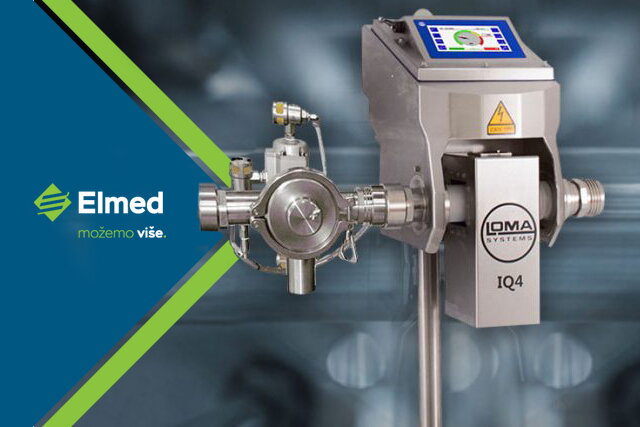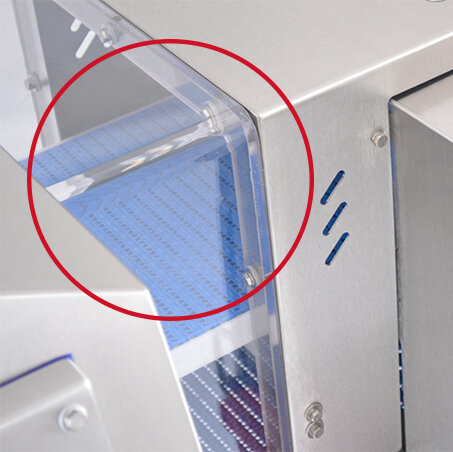What is the metal free zone?

Has your metal detector ever gone into meltdown, rejecting product that you know is good for no apparent reason? This can be an alarming situation, causing delays in your food production, but it can be down to a very simple reason – Metal in the Metal Free Zone (MFZ).
What is a metal free zone
The MFZ is an area surrounding the aperture of a metal detector that should be kept free of any fixed or moving metal. It sounds simple, but three to four calls a week received by LOMA’s Technical Department are a result of metal in the Metal Free Zone.

What are symptoms of metal in the MFZ?
Put simply, in the food production environment, if you place metal too close to a metal detector, (i.e. in the MFZ) the signal will spike, leading to false rejects. This can appear to be random or follow a pattern, it will depend on what type of encroachment is causing the issue (moving or non-moving metal). It can also produce symptoms like that of a contaminated belt or walkie talkie use.
How do I ensure I have a Metal Free Zone?

The calculation for a MFZ varies depending on two key factors; is it moving or non-moving metal. The only exception to this rule is gravity fed systems that are integrated into fill and seal baggers with a chute going through the aperture. These units are normally built with either welded or bolt-on rings, keeping the field aimed up the chute, preventing it from spreading to the structure and causing instability.
Non-moving metal
Examples of non-moving metal includes; Conveyor covers, factory fixtures, other production lines, etc.
Calculation – 1.5 x the aperture height. (I.e. if the aperture is 200mm in height, the MFZ will be 300mm from the middle of the metal detector aperture).
Moving metal
Examples of moving metal includes; rollers, motors, personal items, etc.
Calculation – 3 x the aperture height. (I.e. if the aperture is 200mm in height, the MFZ will be 600mm for the middle of the metal detector aperture).
Note: The top, back and bottom of the head do not need a certain distance due to the steel casing blocking the signals. However, you can look to use 1 x the aperture height, but this will not be true for large heads. The figures above are based on a general rule for the IQ4 metal detector.
